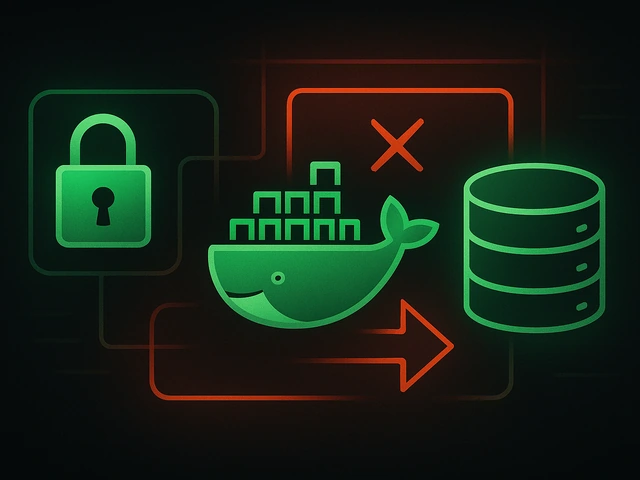The computer online game Minecraft has gained unprecedented popularity among children and youth by giving the player complete freedom of action. And the most po...
3v-Hosting Blog
LiteSpeed Web Server and Its Advantages
8 min read
When you think of web servers, the usual suspects like Apache and Nginx probably pop into your head. They've been the kings of the Internet for years. But there's another contender that's been quietly making its way up the ranks: LiteSpeed Web Server. It's fast, secure, and incredibly efficient - think of it as a performance ninja among the traditional giants.
LiteSpeed isn’t just another alternative to Apache. It’s a modern, event-driven engine designed to extract every last millisecond of performance from your setup. Whether you're running a WordPress blog, a bustling e-commerce site, or a Kubernetes-based SaaS platform, LiteSpeed has something to offer for anyone who values speed, scalability, and reliability.
The Core Concept Behind LiteSpeed
LiteSpeed was built around a straightforward yet powerful concept: to deliver content more quickly while using fewer server resources. Traditional web servers, like Apache, operate on a process-based model, where each request requires its own thread or process. While this approach is reliable, it can be quite inefficient when scaled up.
In contrast, LiteSpeed adopts an event-driven architecture, much like Nginx. Instead of creating new processes for every single connection, it efficiently manages thousands of simultaneous requests with a small pool of worker processes. This design results in significantly lower CPU and memory usage, even during peak traffic times.
What really sets LiteSpeed apart is its full compatibility with Apache. You can continue using .htaccess, mod_rewrite, and the same directory structure, which means you can switch from Apache to LiteSpeed in just a matter of minutes without having to reconfigure everything from scratch.
Speed: The Heart of LiteSpeed
Performance benchmarks consistently reveal that LiteSpeed outshines both Apache and even Nginx, particularly when the pressure is on. This advantage comes from LiteSpeed’s event-driven architecture, paired with smart caching, which significantly cuts down on latency and response times.
Take LiteSpeed’s LSCache, for instance-it's one of the most sophisticated server-level caching systems out there. Unlike those PHP-based caching plugins that kick in after the web server has already done some heavy lifting, LSCache works right at the server level. This means it can deliver fully cached pages before PHP even gets a chance to run, drastically reducing response times and ramping up throughput.
To illustrate, consider a WooCommerce store that attracts 50,000 visitors a month. By simply turning on LSCache, they can slash CPU load by as much as 80%. The impact is instantly noticeable in tools like Google PageSpeed Insights and Core Web Vitals.
Handling High Traffic: Built-In Scalability
Traffic spikes can be a real headache for any system administrator. Just one viral post or a seasonal sale can crash an under-optimized web server. But that’s where LiteSpeed shines.
It’s designed to handle thousands of simultaneous connections while using minimal memory, so it keeps performing well even when the load suddenly increases. The server smartly queues and processes requests, ensuring that it doesn’t freeze or drop connections.
In hosting environments-especially in shared and VPS setups-this means more stable uptime and less need for overprovisioning. With LiteSpeed, hosting providers can accommodate more clients on the same hardware, which helps cut operational costs and boosts efficiency.
Security as a Core Feature
LiteSpeed’s security model is truly embedded in its core. It comes packed with features that, in other setups, would typically need a bunch of add-ons or complicated configurations.
Here are some key highlights:
- Anti-DDoS protection right at the connection level, which helps limit request rates per IP and stops those pesky slow-attack patterns.
- Integration with reCAPTCHA for validating requests dynamically.
- Compatibility with ModSecurity - you can apply the same OWASP rulesets that are designed for Apache, ensuring everything runs smoothly and stays compliant.
- Protection against brute-force attacks for CMS login pages like WordPress or Joomla.
In real-world use, these built-in defenses work to neutralize many common attack vectors before they even hit the application layer. This not only reduces server load but also keeps your sites running smoothly, even when under attack.
WordPress and CMS Integration
LiteSpeed has really established itself as the go-to performance engine for WordPress sites. The LSCache plugin works seamlessly with the web server, allowing it to manage page caching, object caching, image optimization, and even database query caching right at the infrastructure level.
But it doesn’t stop there! LiteSpeed also plays nicely with other popular CMS platforms like Joomla, Drupal, and Magento. The benefits are always the same - quicker page load times and reduced backend operations.
Here’s something interesting: some managed WordPress hosting providers have completely transitioned to LiteSpeed due to its lower infrastructure costs per user. It’s not just about speed; it’s also a smart economic choice.
Comparing LiteSpeed, Apache, and Nginx
To really grasp why LiteSpeed has become so popular, it’s useful to look at it alongside the two longstanding giants of web serving - Apache and Nginx.
Apache is the oldest and most commonly used web server, built on a process-based architecture. It creates separate processes or threads for each request, which makes it stable but can be quite resource-intensive when the load gets heavy. Its greatest strengths are its flexibility and compatibility - it supports .htaccess, mod_rewrite, and boasts a huge ecosystem of modules. For small to medium-sized projects, Apache is straightforward to configure and dependable, but as traffic increases, its performance can start to lag without some intricate tuning.
Nginx, in contrast, was crafted with scalability in mind. Its event-driven architecture enables it to manage thousands of concurrent connections efficiently, using significantly less memory than Apache. It excels as a reverse proxy or load balancer and is incredibly quick at serving static content. However, Nginx does have a notable downside: its ability to handle dynamic content is somewhat limited. To process PHP, Python, or other application code, it usually depends on an external service like PHP-FPM, which can complicate configuration. Plus, it doesn’t support .htaccess, meaning that administrators have to manage rewrites and access rules from a central location.
LiteSpeed cleverly combines the best features of both Apache and Nginx. Like Nginx, it’s designed with an event-driven architecture that can handle a huge number of connections while using minimal resources. However, it also keeps full compatibility with Apache, meaning it supports .htaccess, mod_rewrite, and standard configuration formats. This compatibility allows you to switch from Apache without having to overhaul your entire setup. Plus, it comes with built-in caching through LSCache, which works at the server level and offers performance that far surpasses what you’d get from PHP-based plugins. When it comes to SSL performance, it holds its own against Nginx, and its DDoS protection and security features are notably more robust.
On the licensing front, both Apache and Nginx are open source, while LiteSpeed has a dual approach: OpenLiteSpeed (which is free) for general use, and LiteSpeed Enterprise (a commercial option) aimed at hosting providers and large-scale production environments.
In summary, Apache is still the go-to choice for universal and backward compatibility, and Nginx leads the way in proxy and edge performance. But LiteSpeed brings together the best of both worlds - the adaptability of Apache and the sheer speed of Nginx - often outpacing both in performance.
Other articles on this topic in our Blog:
- How To Install Nginx on Ubuntu 22.04
- How to Reload and Restart Nginx
- Configuring a Web Server on a VPS with Ansible
- HTTPS Port: What is it, what is it for and how to use it
Resource Efficiency in Cloud and VPS Environments
LiteSpeed’s lightweight design makes it a fantastic choice for VPS hosting and cloud setups. In situations where every single megabyte of RAM counts, its optimized event loop can lead to impressive resource savings.
For DevOps engineers juggling multiple containers or Kubernetes pods, LiteSpeed’s efficiency can really add up to noticeable cost savings. You can run more web instances on each node, postpone the need for horizontal scaling, and still provide lightning-fast response times.
In managed hosting environments - like those provided by 3v-Hosting - LiteSpeed shines as the go-to option for VPS configurations where getting the best performance for your money is key.
Compatibility and Easy Migration
LiteSpeed is fully compatible with Apache configurations, which means it supports .htaccess, mod_rewrite, and even custom error documents. This compatibility allows existing websites to transition to LiteSpeed without needing to modify application code or rework complex rewrite rules.
In practice, making the switch is typically as easy as installing LiteSpeed Web Server or OpenLiteSpeed, copying over your virtual host settings, and tweaking permissions. The whole process is so quick that many hosting providers have streamlined it within control panels like cPanel and DirectAdmin.
The Ecosystem: LiteSpeed and OpenLiteSpeed
There are two main flavors of LiteSpeed: LiteSpeed Enterprise, which is commercial, and OpenLiteSpeed, the open-source option.
OpenLiteSpeed is a fantastic choice if you're looking for something free and high-performance, perfect for personal projects or smaller VPS setups. On the other hand, LiteSpeed Enterprise comes packed with premium features like support for control panels, QUIC.cloud integration, and enhanced security.
This two-pronged approach means that both individuals and large hosting providers can take advantage of LiteSpeed technology. Developers can start with OpenLiteSpeed for experimentation and then easily transition to the Enterprise edition when they need more control or support.
Modern Protocols and Web Standards
LiteSpeed is at the forefront of embracing new Internet standards. It was among the pioneers to roll out HTTP/3 and QUIC, the cutting-edge web transport protocols developed by Google. These innovations help cut down on latency, boost reliability on shaky networks, and significantly enhance the user experience, particularly for those on mobile devices.
For website owners, this means improved SEO performance-since Google is increasingly considering site speed and responsiveness in its ranking algorithms. LiteSpeed doesn’t just speed up page delivery; it also helps your pages climb the rankings faster.
Why Hosting Providers Love LiteSpeed
When it comes to hosting providers, LiteSpeed really makes things easier. You’ll see fewer support tickets, better resource management, and happier clients all around. It plays nicely with popular control panels like cPanel, DirectAdmin, and Plesk, plus it offers features like automatic certificate management, HTTP/3 support, and smart throttling.
For clients using VPS or dedicated servers at 3v-Hosting, this means they can accommodate more visitors without needing to upgrade to a pricier plan. For the provider, it translates to less strain on the server and more consistent performance, even when handling mixed workloads.
But let’s be real-no technology is without its flaws.
While LiteSpeed has a lot going for it, it’s not perfect. The Enterprise edition is a paid option, and although the pricing is fair, it does add an extra expense compared to open-source alternatives.
Another thing to keep in mind is that LiteSpeed’s internal workings are closed-source, which means debugging or making deep customizations isn’t as straightforward as it is with Nginx or Apache. However, for most users, the performance improvements and reduced maintenance time make these drawbacks seem pretty minor.
Conclusion
LiteSpeed isn’t just another faster version of Apache - it’s a whole new web server designed for today’s digital performance demands. It combines the user-friendly nature of Apache with the powerful efficiency of event-driven processing, all while offering top-notch security and caching.
For developers, this translates to quicker load times and less time spent on backend adjustments. For businesses, it means improved SEO, reduced bounce rates, and happier customers. And for hosting providers like 3v-Hosting, it’s an opportunity to provide more value for every VPS, core, and dollar spent.
Whether you’re managing a WordPress blog or running a microservices-based SaaS platform, LiteSpeed delivers an exceptional mix of speed, scalability, and stability - the key ingredients that make the web feel fast again.

Learn how IP addresses work: IPv4 vs IPv6, public and private IPs, DNS resolution, routing, security basics, and how IPs are used in real server and cloud infra...

Accelerating WordPress at the Nginx level: correct PHP-FPM settings, try_files, static files, caching, Brotli, wp-login protection, and secure headers for stabl...

Effective backup strategies for Docker applications: how to protect volumes, data, and configurations while avoiding common mistakes, and quickly restore servic...












